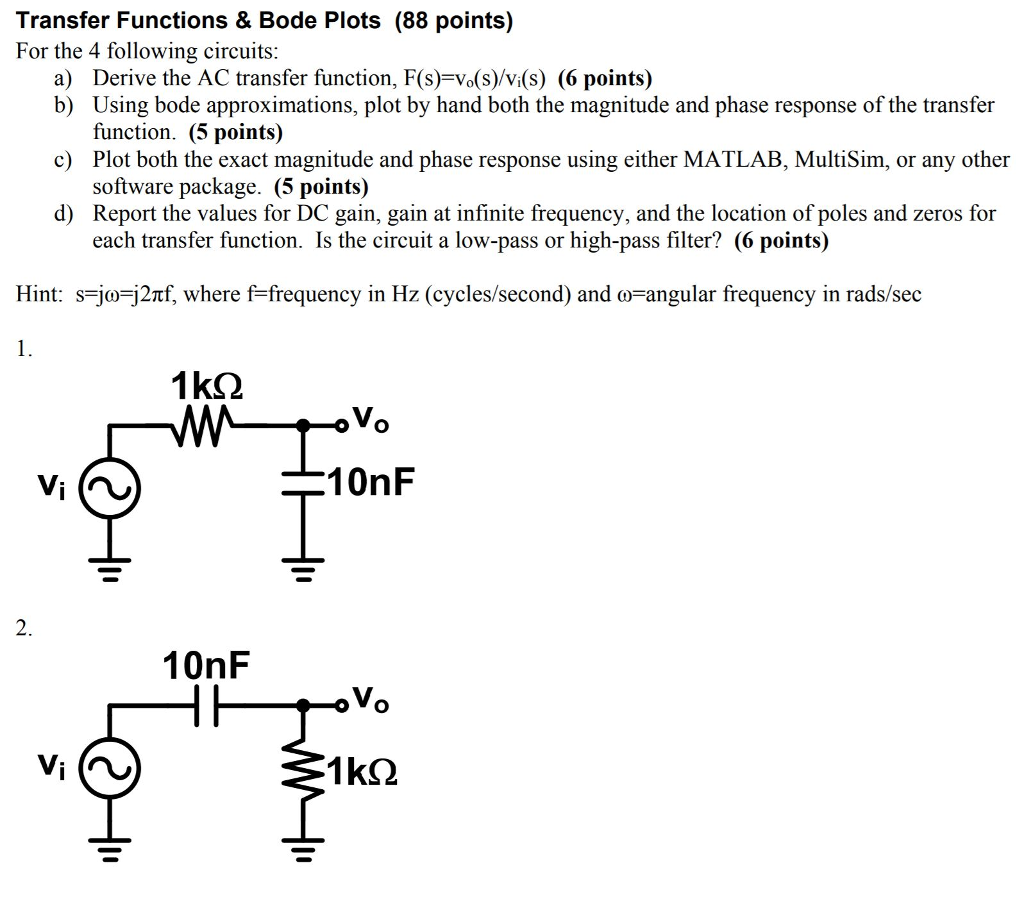
The characteristic equation of a typical system can be written as, It is the frequency at which amplitude ratio becomes 1 or log modulus of transfer function becomes 0. It is the frequency, where phase shift becomes -180 o. There are certain terms, which we need to familiar with to fully understand the bode plot. Wn = 2*pi*fn % Natural frequency conversion in rad/sįig.6: Plot for Second Order System Special Terms Here, we implemented the bode plot of a second-order network for the comprehensive understanding of the readers. Which means that phase plot would be a straight line with -90. $G\left( j\omega \right)H\left( j\omega \right)=K$ For gain factor K, the bode-plot is obtained as:

We will discuss above elementary factors one by one: Gain factor KĪ constant K may be considered as complex number expressed in polar form with magnitude K and angle 0. The Bode plot or diagram of a transfer function can be constructed by combining the transfer functions of following elementary factors. In bode-plot, low-frequency asymptote (that is ω>1/T) cut off at 0 decibels (dB) line where ω=1/T, that is the frequency called corner frequency or break point.



 0 kommentar(er)
0 kommentar(er)
